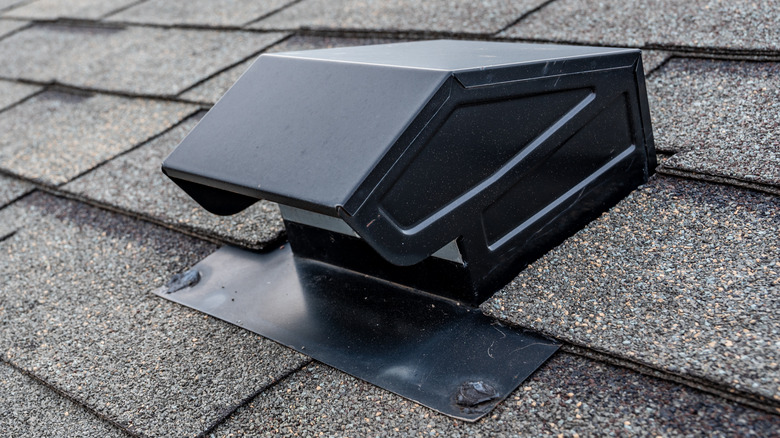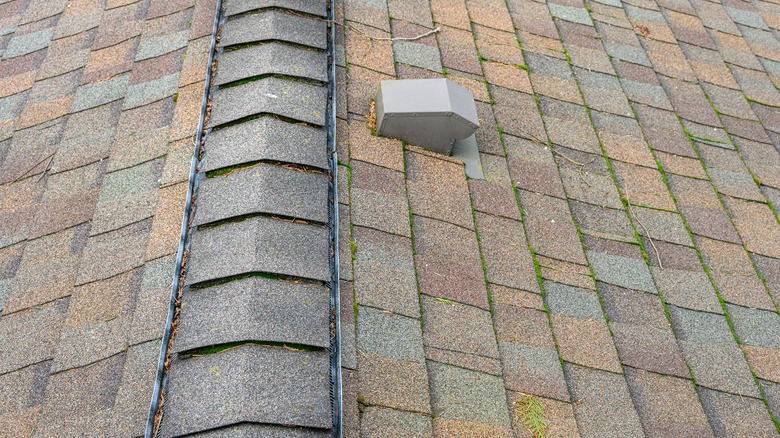What Is A Box Roof Vent And How Does It Work?
You should probably have holes in your roof. A lot of them. They should let equal amounts of air into and out of your attic and prevent any water from coming in. And while pretty much every other hole in your house will make things like heating and air conditioning more costly, these particular holes should save you money. If this sounds like an unlikely scenario, consider the fact that you might already have these openings — let's call them attic ventilation — and some of them might be covered with box roof vents. They're a key part of your roof system designed to let hot air out of your attic. But, as you might have guessed, it gets a little more complicated than that.
Box vents are usually squarish devices placed high on roofs to allow hot air out while preventing rain and snow from getting in. They're passive devices that have no power needs or moving parts. Roof ventilation is a system designed to manage temperature and moisture, improve energy efficiency, and make your roof last longer. To do this, outdoor air is allowed in (usually through soffit vents) and hot attic air is expelled (usually through box vents or ridge vents). These inputs and outputs must be balanced and spaced uniformly to work properly. Attic ventilation is necessary unless the home's building envelope is completely sealed or the living space is sealed off from the attic space with a vapor barrier like spray foam insulation.
Pros, cons, and alternatives
The main alternative to box vents is a ridge vent, which runs the length of your roof's peak. Ridge vents are generally more effective because they can eliminate all of the warmest air. But box models are cheaper and perform better on low-slope roofs. They're also less likely to admit snow and rain into the attic and thus less likely to be blocked by snow and ice. They also work when ridge vents aren't possible, such as when a roof has no ridge (pyramid-shaped roofs, for example). Because box designs are a bit of an eyesore, they're usually installed on the back side of the roof when possible.
Box vents are also passive — that is, they don't rely on electricity but use the natural convection of air at different movements within an attic space. For this reason, they are both more efficient and less powerful than electric exhaust ventilation fans. But powered fans can create negative pressure in your attic, which can sometimes pull air from inside the home into the attic. This increases heating and cooling costs, of course, and can also draw in moist air — a major concern if you have or are considering a metal roof as it contributes to high humidity, condensation, and mold. For an alternative, install a solar attic fan that's a little less powerful and creates fewer moisture issues. Box vents shouldn't be combined with other vent types either, especially ridge vents. This pairing can create a crosscurrent that draws air in through exhaust vents rather than at the house's soffits, undermining the preferable flow of air from bottom to top, then out of the attic.

